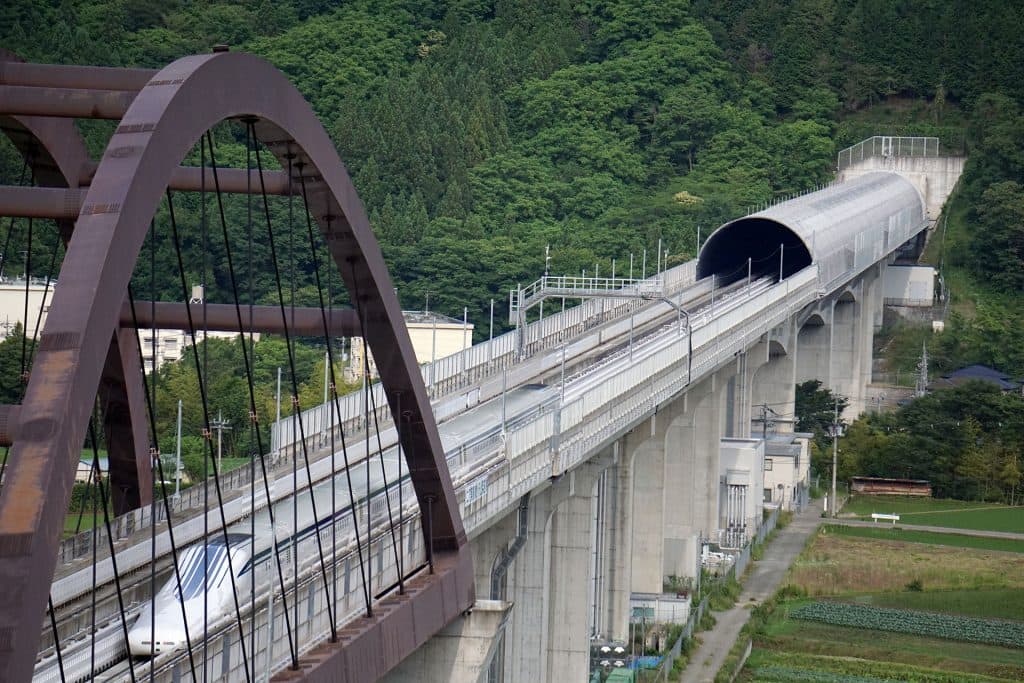
The fastest train in the world will run between Tokyo and Osaka, covering a distance of more than 400 kilometres at a top speed of 505 kilometres per hour. Japan, inventor of the Shinkansen, or high-speed train, and is moving the bar higher with an even more innovative response to the issue of sustainable mobility.
The Linear Chuo Shinkansen will use the latest in magnetic levitation technology, or Maglev, that the Central Japan Railways Co (JR Central) has been testing for years. More than half a century after the first trip made by the Tokaido Shinkansen, the development of rail transport in Japan is at another turning point: the transition from rail to levitation.
But it will not be without its rivals. China, for one, is testing its own version of the technology.
The project timetables
Japan will put the line into service in stages. The first will connect Shinagawa Station in Tokyo with the Nagoya JR Station by 2027. It will cover 286 kilometres in just 40 minutes, compared with the hour and a half needed on the Tokaido Line.
About 80% of the line will run underground. Only in the second phase will it extend to Osaka for another 153 kilometres.
The line will pass under cities including Tokyo, where work began last year to build a tunnel big enough to accommodate the new trains. In order to start the excavations, a hole 36 metres wide and 83 metres deep had to be dug to be able to lower the machinery necessary to dig the tunnel.
On March 7, JR Central opened the Nagoya Station for journalists to visit where the train will travel an average of 40 metres below ground.
Maglev technology
In Japan, Maglev magnetic levitation technology has been tested since 1997 on a test track built in the Yamanashi prefecture, where the trains have already been running for years. The train set its first world speed record in a test in December 2003, when it reached 581 kilometres per hour, and then beat its own record in 2015 reaching 603 near Mount Fuji.
The new technology is considered a national transport achievement, to be shared with citizens. So much so that public viewing centres are located at certain points along the track – such as in Nagoya or near the city of Otsuki – to let people watch the tests of the line, and even try the new train. According to reports from JR Central, between November 2014 and the end of 2016, more than 30,000 people made trial trips in the super-fast train.

The development of high speed
High-speed rail in Japan is considered strategic to economic development. It was sanctioned in 1970 by the Nationwide Shinkansen Railway Development Act, which still supports the development of high-speed lines in the country. The project to build a super high-speed connection between Tokyo and Osaka dates back to 1973, when a first feasibility study was carried out. From 1990 to 2008, topographic surveys were conducted on the identified route, while the operational development plan was only approved in May 2011. The environmental impact studies were conducted from 2011 to October 2014, when construction received the green light and work began.
Competition with China
Japan’s historic leadership in high-speed rail is threatened by China. Last week, the television cable network CNN revealed that construction of a magnetic levitation train model had been completed in Qingdao. It will float on a single rail travelling at a speed of 600 kilometres per hour. State company China Railway Rolling Stock Corp should begin to run the service as early as 2021.
Just like in Japan, these super high speeds are guaranteed by Maglev technology, which China has already tested in the past. The Shanghai Maglev Transportation Development Co. built the Maglev track operating between Shanghai International Airport and the city centre, where trains reach a speed of 431 kilometres per hour.
These achievements are the result of a $550-billion investment plan which the Chinese government approved for the 2016-2020 period. Its goal is to expand the country’s rail network, especially the high-speed one, to rival Japan’s and re-launch the Asian challenge to run the fastest train in the name of sustainability.

